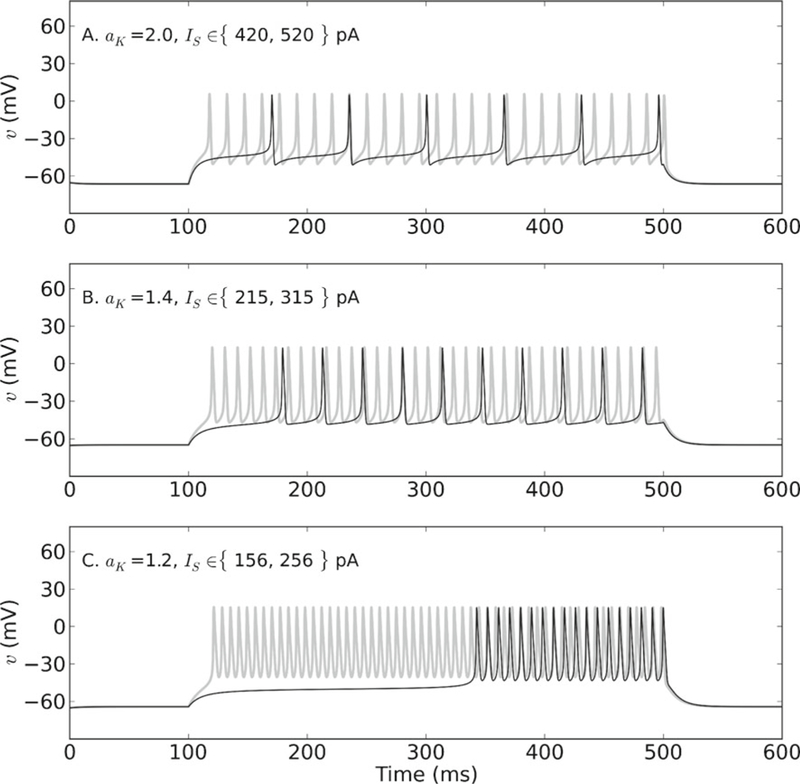Fig. 6.

Elevated potentials and delayed firing profiles produced by variation in Shab channel activation and expression. Slower Shab channel activation results in the production of elevated potentials on which spikes ride for each aK. Several different delayed firing profiles are also produced by varying aK. Stimulating the membrane a little beyond Icyc when aK = 2.0 elicits repetitive spiking with a delay to first spike and a subsequent ISI of similar duration (black trace). Increasing the current amplitude by 100 pA decreases the spike latency and elicits higher-frequency spiking (gray trace). Spike shape is similar to MN5 spikes. (B) Stimulating beyond Icyc when aK = 1.4 produces a delay to first spike longer than the subsequent ISI (black trace). Increasing the current by 100 pA abolishes the long delay and elicits higher-frequency repetitive firing (gray trace). Note similarity to delayed firing profile of MN5 in Fig. 1(B). However, spikes in this case have different concavity to those recorded from MN5. (C) Stimulating the membrane just above Icyc when aK = 1.2 produces a much longer delay to first spike than the ISI (black trace). Increasing the current amplitude eliminates the long delay and increases the firing frequency (gray trace). Again, this profile is similar to that in Fig. 1(B). However, the spike shape is worse than that seen when aK = 1.4. Parameters: σw = 0.3, τ̄w = 5 ms
